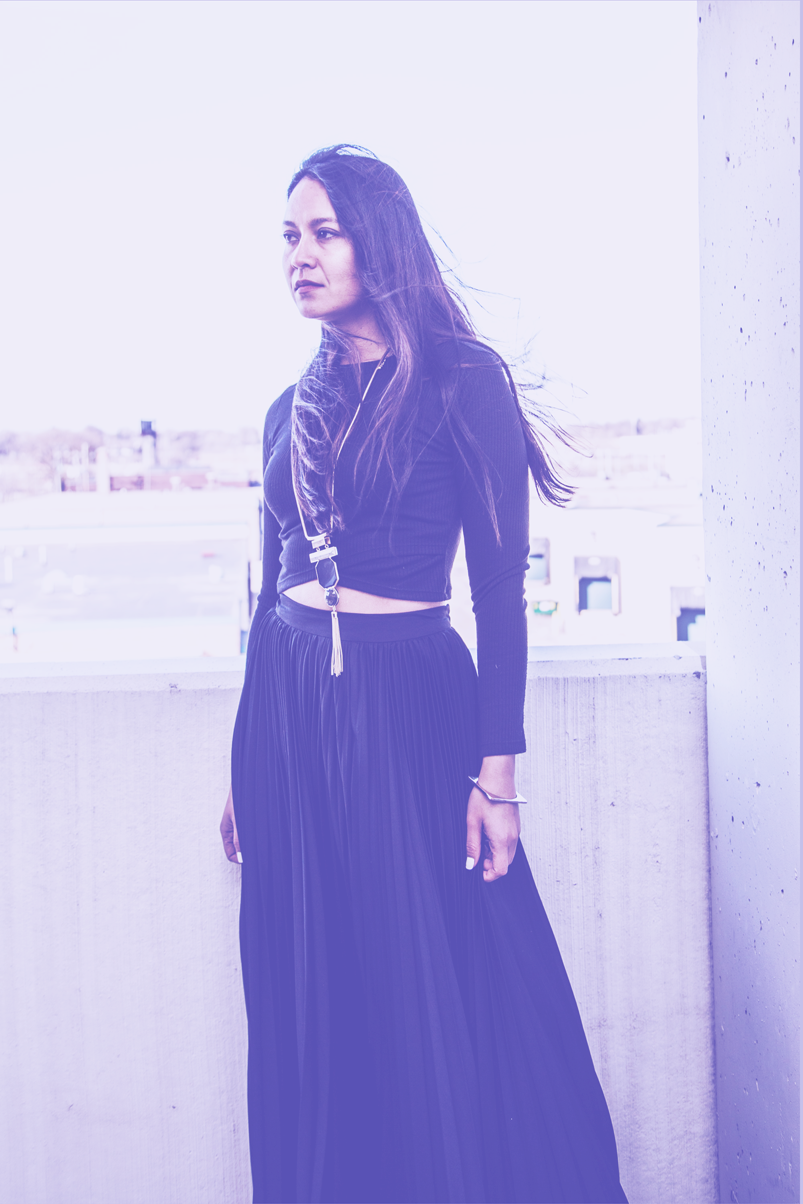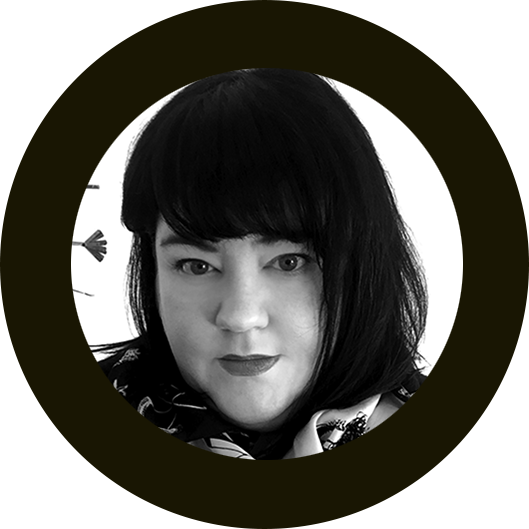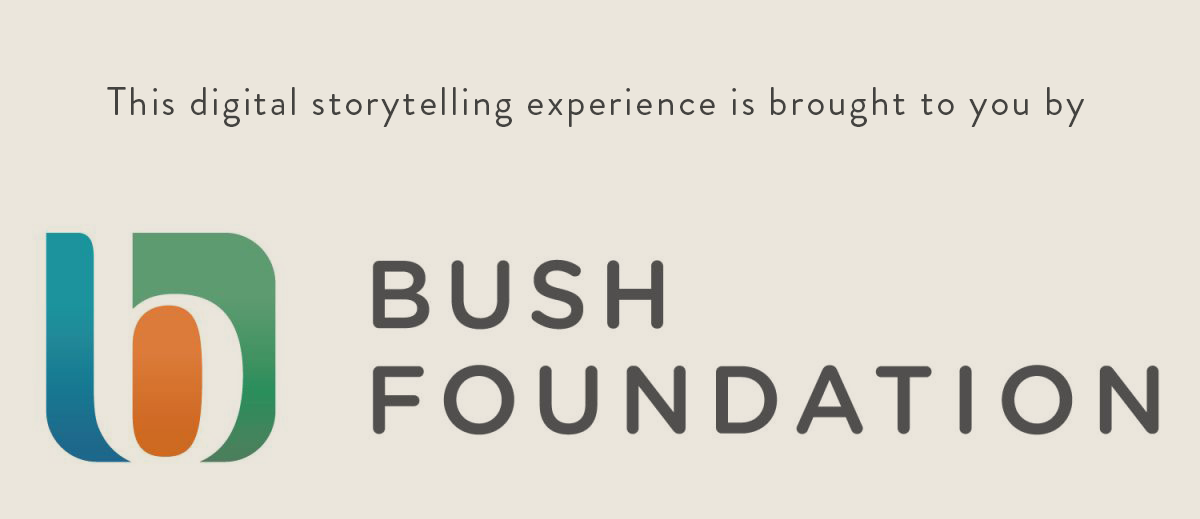
STORY BY HOLLY HARRISON + ART BY SARAH WHITE
Minneapolis is losing its art galleries. One by one, they’re winking out like stars, leaving the landscape a little darker, a little less vibrant. At the end of 2015, Burnet Gallery closed. Soap Factory went on hiatus (they reopened in March), and Franklin Art Works confirmed it wouldn’t return from theirs. Just last month, Instinct Art Gallery put on its final show.

Tricia Heuring, co-director and curator at Public Functionary, has her own ideas about how to stay relevant in the Instagram age, when art has become part of people’s everyday whether they leave their homes or not.
“Things are shifting, and the way we interact with art—the way we feel about art—has completely changed. The old model of running an art space is not going to be relevant anymore.”

You can see it in Public Functionary’s three year history. You can trace it all the way back to Tricia’s childhood, growing up American in the Middle East, and to how she found her way to her chosen career. It involves being adaptable, being nimble, and being unafraid of a mess. In short: “I want the idea of a model to be thrown out the window.”

Tricia grew up in Egypt and traveled all over the world before coming to Minnesota. “I’m what’s called a ‘third culture kid’—I’m Thai and American and I grew up in a culture that was neither my dad’s nor my mom’s,” Tricia explains. “I’ve always thought of home and identity in a fluid way because of it.”
When it came time to go to college, her dad recommended Minnesota. Her grandparents lived here, plus having visited before might soak up some of the culture shock. But there was something else. “I remember saying, ‘Ugh, but Minnesota! Dad, that’s so boring. There’s nothing there.’ But my dad told me, ‘I think the Twin Cities are the best kept secret in the Midwest.’ He said this in 1997. He didn’t even live here—he’d left when he was nineteen and never moved back—but he knew it was a special place and that I should give it a chance.”
Tricia came to Minnesota and stayed. And while she doesn’t plan on being in Minnesota forever, she hadn’t planned on staying this long either.

In her years as a “wandering creative,” Tricia has been a writer, an editor, and, finally, a curator—though it took her a long while to really own that final title. “I’m always very apologetic about the fact that I didn’t get a PhD in art history and had more of an unconventional path to becoming a curator. I feel like that role found me, because I gave my career enough time to unfold and I experimented and I explored until I came across this role that fit,” she says. “As a woman of color, I spent a lot of time trying to find my place in the very white, male-dominated art world. I didn’t always see myself reflected, which contributed to my imposter syndrome. My multicultural, mixed-race, hybrid identity is valid. It might not be what the art world currently looks like, but it’s what I am and what I want to represent. Now that I feel quite established in my role as a curator, I can be more deliberate about who I want to represent in my space—who I pave the way for and why.”
And even though she’s finally comfortable owning her role, she hesitates to call herself an expert. She prefers work in progress. “When you go to a retrospective and you get to look at all the work an artist created over twenty years, you see the early work and you see how it influenced the later work. You see some works that were failures and you see some that were masterpieces. You see where the height of their career was and then where they got comfortable. I compare my career to an artist’s career and think that in twenty years, I might look back at Public Functionary and think, ‘Wow, that was a huge experiment, but I was on to something.’ If I stop being a curator now, I’ll never know what my full potential is.”
In 2012, Tricia co-founded Public Functionary, an exhibition and social space, with Mike Bishop and Kate Iverson. (They still share leadership today, working at Public Functionary full time while supporting themselves with additional work as consultants, freelancers, adjunct professors, and so on.)
“Before we first started Public Functionary, I would go to the art galleries and spaces in this city, and most of the time I would feel uncomfortable,” Tricia says.
“I would think, ‘All of these people know each other. I feel like I’m in a scene right now and I’m not part of it, even though I am an art person.’ Everybody looked the same, and seemed to know something I didn’t.” Public Functionary strives to be a space where communities diverse in disciplines, ethnicities, and backgrounds intermingle. So far it’s been a success. Their audience is made up of visual artists and art enthusiasts, Northeasters and Northeast Minneapolis Arts Association (NEMAA) members, musicians, dancers, activists, business owners, designers, and beyond. The key to making everyone feel welcome? Make them all feel like they own the space.

“A sense of belonging has to come first, to me this is an audience-centric approach to creating space. It challenges the idea that art is entitled to an audience. I think it should be the other way around.”
“We tend to draw a mixed audience at any given time by staying flexible. One weekend we’ll have a more community-driven or neighborhood event with an organization that caters to a specific demographic, then the next weekend we’ll host something that attracts millennials, hipsters, musicians—and it’s very mixed culturally. We also host events with smaller groups that feel incredibly intimate and are not highly publicized. When an official Public Functionary exhibition opens, all of these audiences feel welcome,” Tricia says. “So many different groups feel like this is their space. Everybody who’s here feels some ownership because they’ve made things happen here or their community has. The more that we can give ownership to diverse audiences, the more they will feel safe and comfortable.”


From day one, Public Functionary has refused to bend to constraints of genre or popular requisites for art galleries. They don’t believe walls have to be white, or that art needs to be consumed in silence (instead putting on all their events with music provided by resident DJ Sarah White, who also did photography for this story). They transform week by week, ebb and flow according to what their audience needs.
“When you first start an arts organization you feel like you need to have a mission statement. That’s what everyone tells you,” Tricia explains. She and her co-directors teeter-tottered for a while—we need a mission, we don’t need a mission—before settling on one, but it’s never stayed the same. Check their website today, then again in six months. Chances are it will have changed, because Public Functionary is in constant evolution. “Not defining what we are allows us to remain flexible and nimble,” Tricia says. “I really believe that’s a shift that’s going to change sustainability of the alternative art space.”
“A lot of other spaces get stuck in these very rigid models that don’t allow them to shift with what is relevant or respond to what the community needs.”
![]()
So, what does Public Functionary’s community need right now? Representation. Not necessarily artists whose art deals with issues affecting their communities, but artists from marginalized communities who need to be seen and heard, even if they’re just bringing beauty into the world. “One of the things I’m really passionate about is fighting Islamophobia, thanks in part to growing up in Muslim countries in the Middle East. But I don’t necessarily need a Muslim artist to do a show on Islamophobia—I need to show more Muslim artists in general. Representation is really important and prevalent right now, people feeling like they are seen and they are heard and reflected in the communities they’re passionate about. So that’s something I’m thinking more about: Who we’re showing on the walls and whose voices need to be heard, but with intention. This goes for all underrepresented communities that I’m invested in, including artists of color and female artists.“
Not being booked out for the next five years means Public Functionary can do just that. The implications go beyond their shows and their audience and into the creative and economic vitality of the Twin Cities as a whole. “A lot of talented, creative young people come and work in the Twin Cities. But unless there’s culture here for them, they’re not going to stay. Their cultural outlets can’t just be bars in downtown Minneapolis, breweries in Northeast, or institutions like the Guthrie or the Walker. To me, though these institutions are a major factor in what makes our city so special, they are structured environments. People want to find spaces where culture is actually happening and being created and being experimented with. With programming at a museum, you feel like you’re consuming something that is being presented to you as an audience member. But if you’re in an experimental alternative space, you’re part of culture being created. A healthy arts landscape needs both established, major institutions and experimental places. It’s a cyclical flow. Public Functionary and places like it actually encourage the cultural production in the Twin Cities. We encourage that experimental energy. We make people feel like they’re living in an innovative place, and that’s key to making people feel inspired and creative and productive.”

That is the essence of Tricia’s creed and Public Functionary’s pursuit. For her and her gallery, art is so much more than what’s on the walls. It’s about throwing off old ideas of high art requiring a certain degree of pretentiousness, and choosing cooperation over gatekeeping, parties over ceremonies. It’s about erasing divisions between creators and consumers, including them all as part of one community that ebbs and flows. Most of all, it’s about the people in the room and the experiences they share there, connecting with the art and connecting with each other.



Triple Threat: Meet Tricia’s Co-Directors
It takes three strong individuals to make Public Functionary thrive.
On co-leadership:
“One of our concerns with running a nonprofit is the longevity of the organization and succession. We often see that with the departure of a founder, an arts organization is put in a fragile position. With three solid leaders, we feel like there is more possibility for a smooth succession plan—as long as all three of us don’t move on at the same time! The collaborative nature of our work functions better as a team, rather than through a top-down hierarchy. With three leaders we are able to avoid burnout more effectively when we’re all sharing the workload equally. We each bring something unique to the table and I truly believe that everything Public Functionary does is a result of our combined effort and talents.”

Mike Bishop, on top of having a curatorial background as a founder of XYandZ Gallery and partner at CO Exhibitions, holds an MBA from St. Thomas University. Mike’s strategic mind for business is a valuable asset to Public Functionary, but he also brings extensive experience in exhibit design, taking lead on museum-quality installations in the space.

Kate Iverson is known as a multifaceted arts promoter, writer, and branding professional who has consulted countless organizations and individual artists throughout the years on marketing, publicity, and brand strategy. Kate previously worked with the art spaces XYandZ Gallery and CO Exhibitions.
Selected photography of the artist behind Tricia’s story: Renaissance Woman, Sarah White.
Sarah is a Minneapolis-based DJ, musician, and photographer who specializes in portraits, events, music and street culture. Self-taught, this hobby naturally morphed into a career while spending five years in New York, camera always in hand. Sarah’s work has been exhibited in various galleries and exhibitions in NYC and Minneapolis, and she is currently deepening her skills while pursuing a degree in fine arts. View her entire portfolio at fotosforbarcelona.



Contributors



































